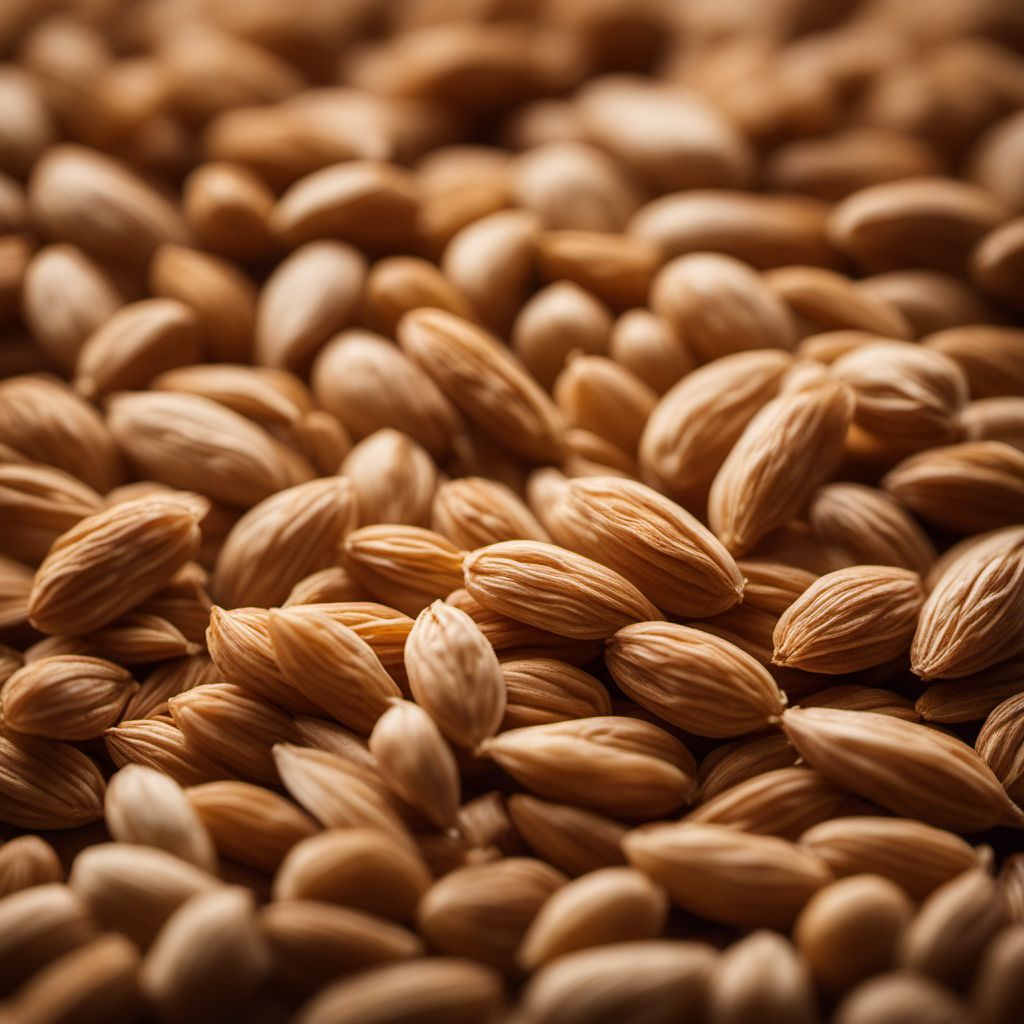
Ingredient
Dried durum pasta
The Versatile Staple
Dried durum pasta is made from durum wheat, a hard variety of wheat that is known for its high protein content and gluten strength. It has a firm texture and a slightly nutty flavor. Dried durum pasta is a versatile ingredient that can be paired with a variety of sauces, vegetables, and proteins.
Origins and history
The origins of pasta can be traced back to ancient China, where it was made from rice flour. However, it was the Italians who popularized pasta and developed a wide range of shapes and varieties. Dried durum pasta, in particular, is a staple in Italian cuisine and has become a beloved ingredient worldwide.
Nutritional information
Dried durum pasta is a good source of complex carbohydrates and provides essential nutrients like fiber, iron, and B vitamins. It is also low in fat and cholesterol, making it a healthy choice for a balanced diet.
Allergens
Dried durum pasta is made from wheat and may contain gluten, which can cause allergic reactions in individuals with gluten intolerance or celiac disease.
How to select
When selecting dried durum pasta, look for brands that use high-quality durum wheat and have a rough surface texture. This helps the sauce adhere better to the pasta. Avoid pasta that appears discolored or has a stale smell.
Storage recommendations
To store dried durum pasta, keep it in a cool, dry place in an airtight container or its original packaging. This helps prevent moisture absorption and keeps the pasta fresh for a longer period. Avoid storing it near strong-smelling foods, as pasta can absorb odors.
How to produce
Dried durum pasta is typically produced in large-scale factories using specialized machinery. However, it can also be made at home using a pasta machine or by hand. The process involves mixing durum wheat flour with water or eggs, kneading the dough, and then rolling it out and cutting it into desired shapes.
Preparation tips
To cook dried durum pasta, bring a large pot of salted water to a boil. Add the pasta and cook until al dente, which means it should still have a slight bite to it. Drain the pasta and toss it with your desired sauce or ingredients. Remember to reserve some pasta cooking water to adjust the consistency of the sauce if needed.
Substitutions
Fresh pasta or whole wheat pasta can be used as substitutes for dried durum pasta. However, the cooking time and texture may vary, so adjustments may be required in recipes.
Culinary uses
Dried durum pasta is widely used in various pasta dishes, such as spaghetti with meatballs, fettuccine Alfredo, lasagna, and macaroni and cheese. It is also a key ingredient in pasta salads and soups.
Availability
Dried durum pasta is readily available in supermarkets, grocery stores, and specialty food stores worldwide. It is a staple in Italian cuisine and is also commonly used in Mediterranean and international dishes.
More ingredients from this category
Recipes using Dried durum pasta

Berber Kusksu with Spiced Lamb and Chickpeas
Savory Berber Kusksu: A Flavorful Twist on a Traditional Maltese Dish

Fettuccine burro e Parmigiano
Parmesan Butter Fettuccine - A Hungarian Twist on an Italian Classic

Kusksu with Fresh Vegetables and Goat Cheese
Mediterranean Delight: Kusksu - A Burst of Fresh Flavors

Bavarian-style Krpice sa Zeljem
Bavarian Cabbage and Noodles Delight
